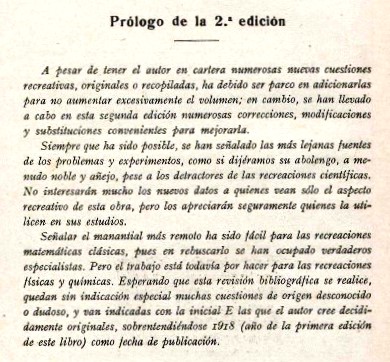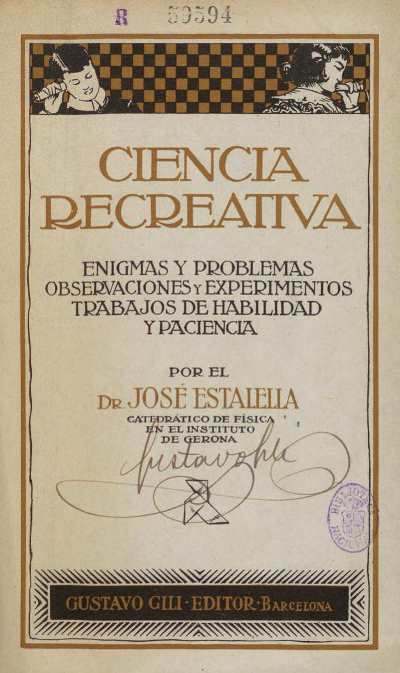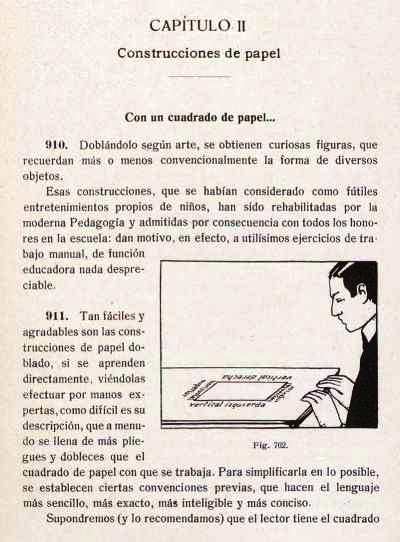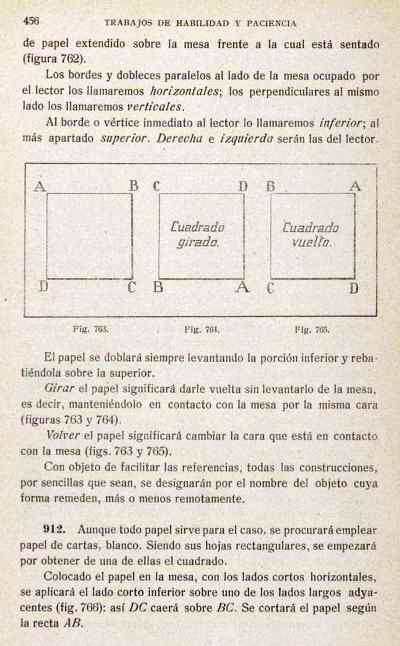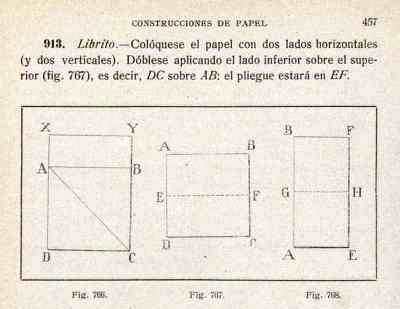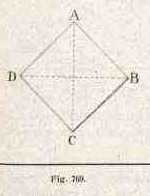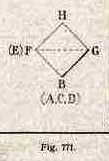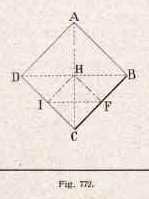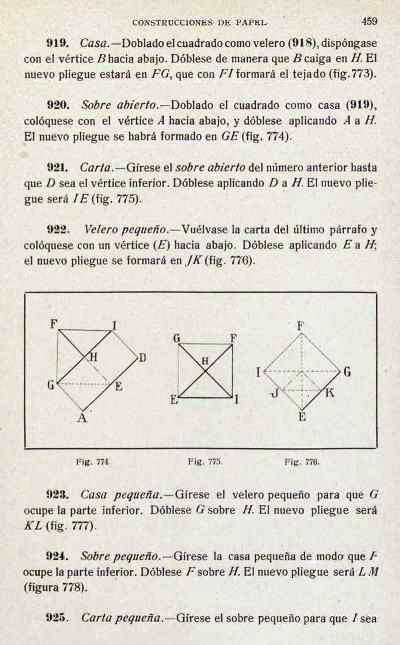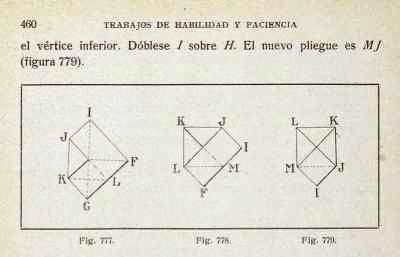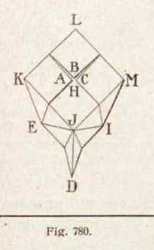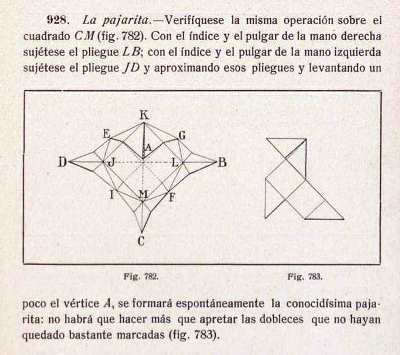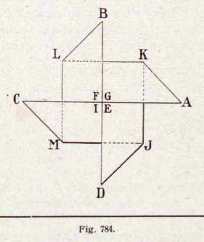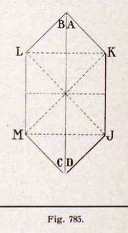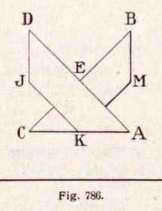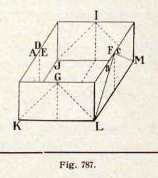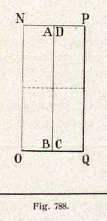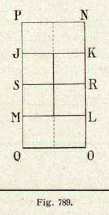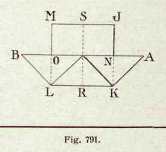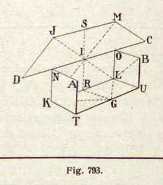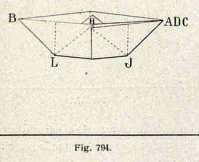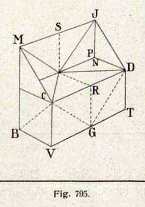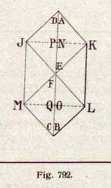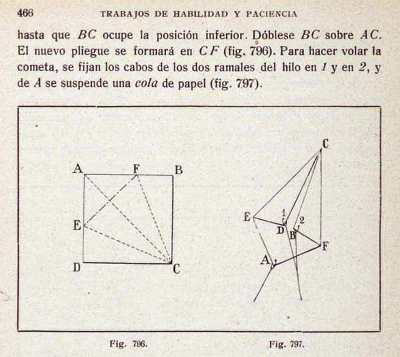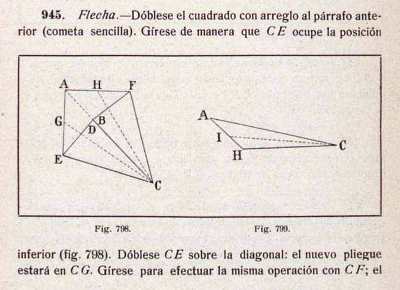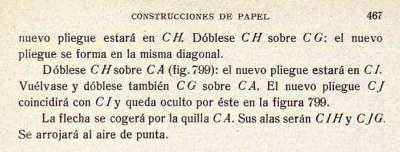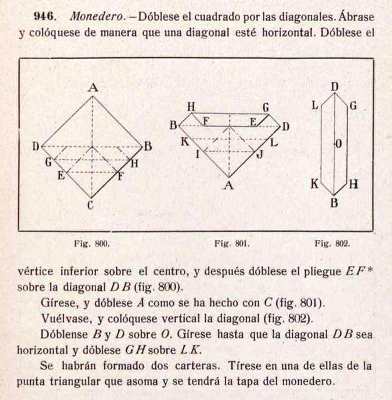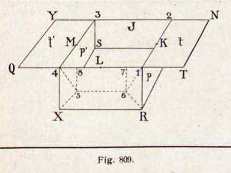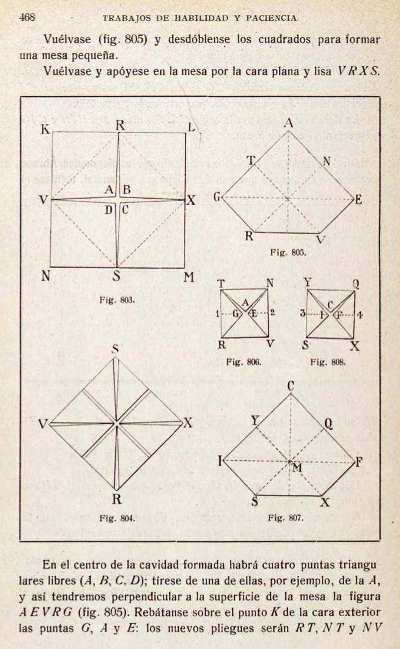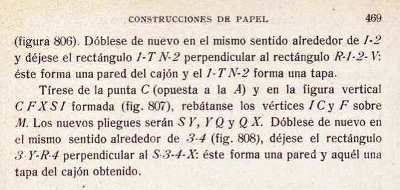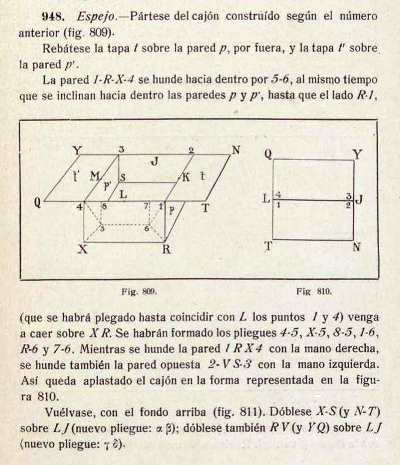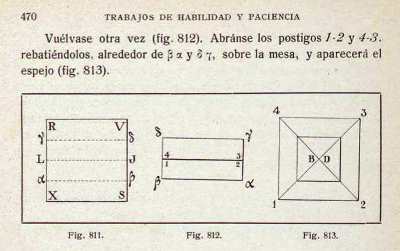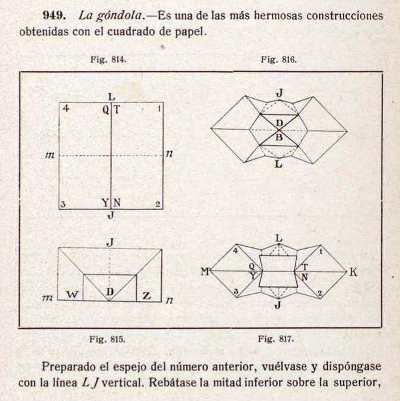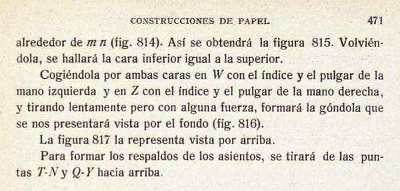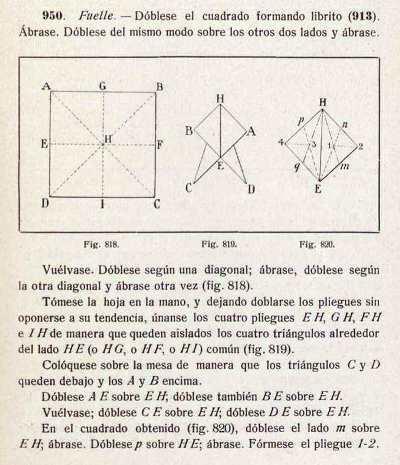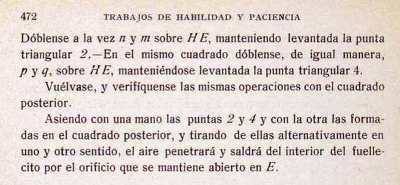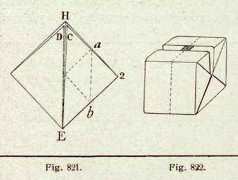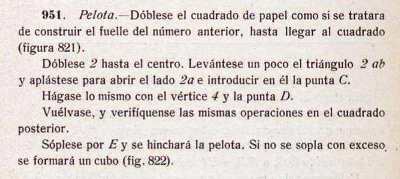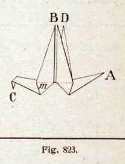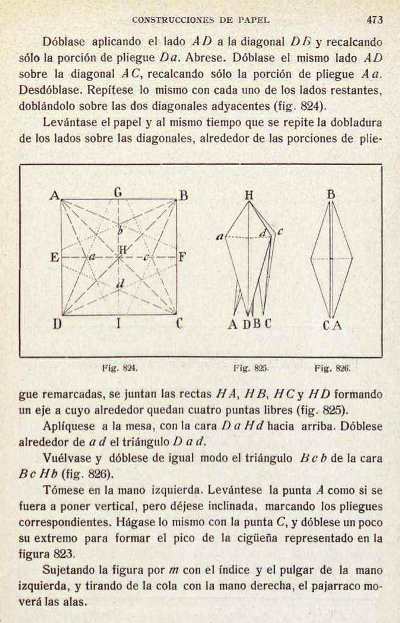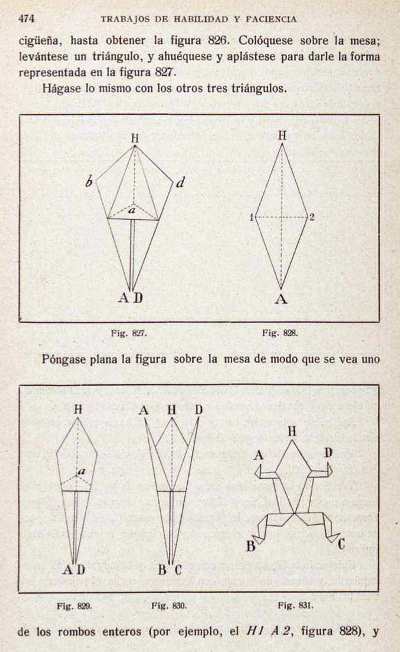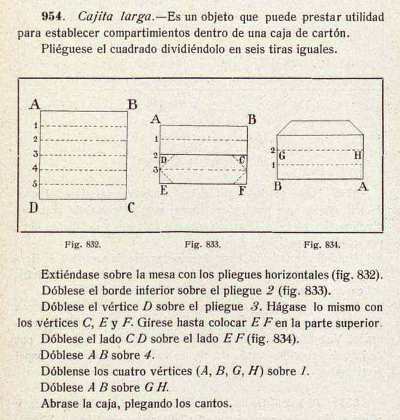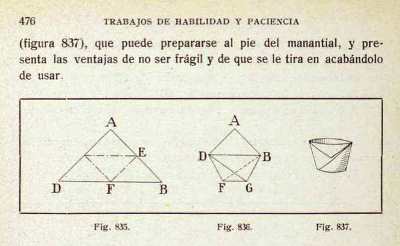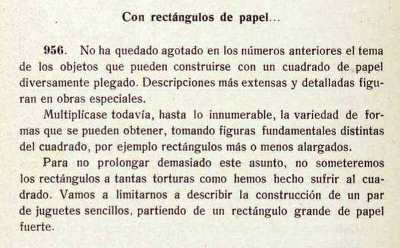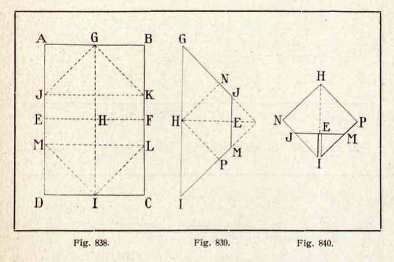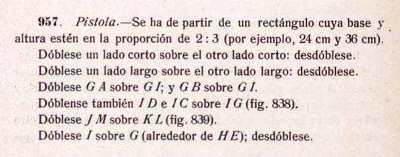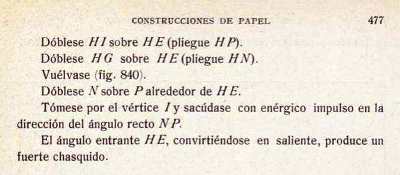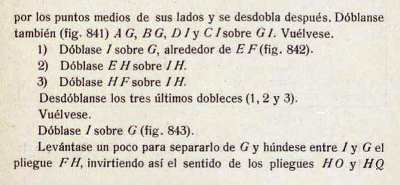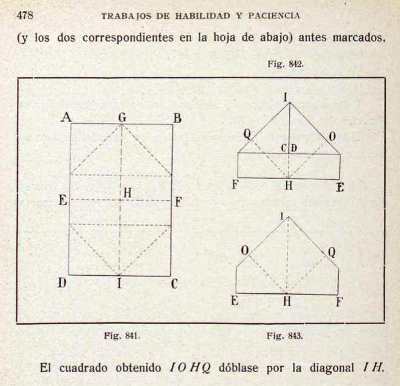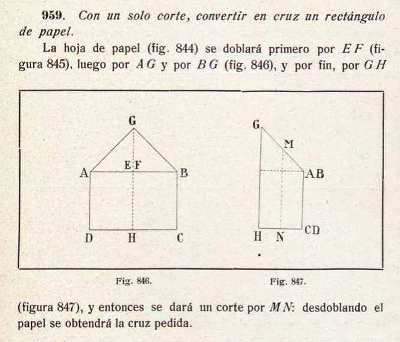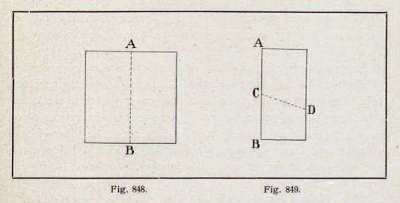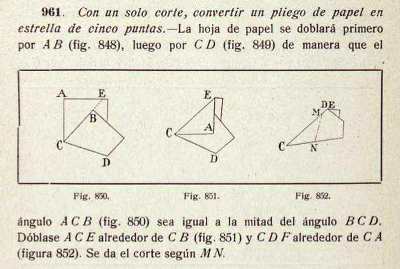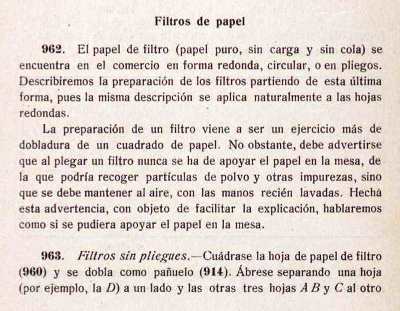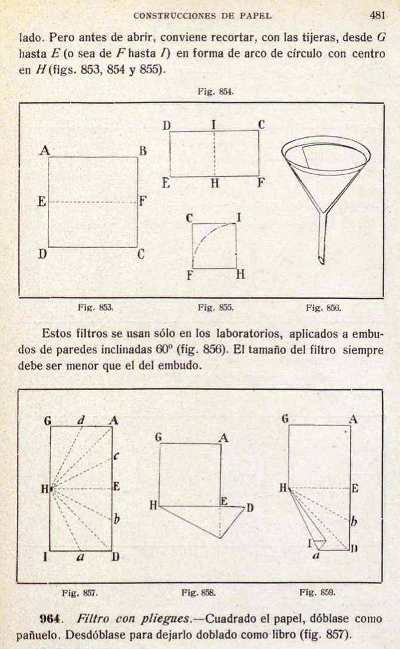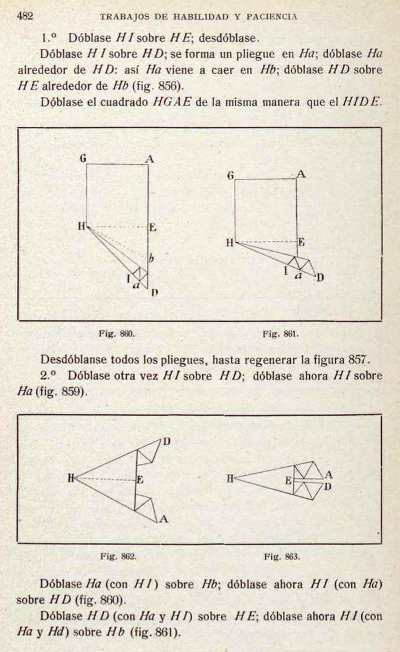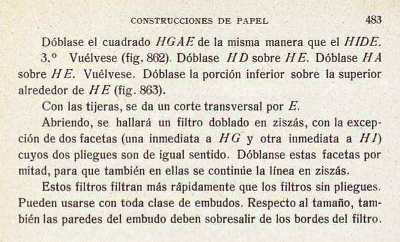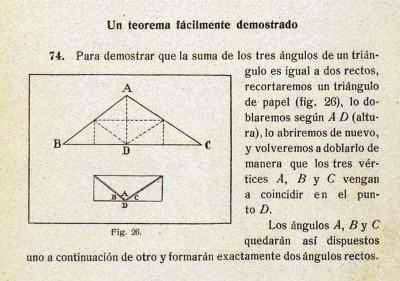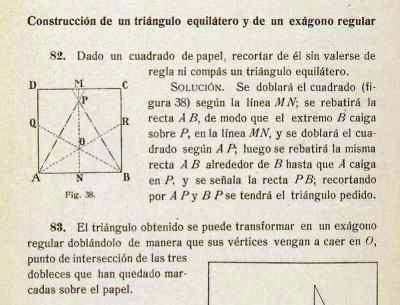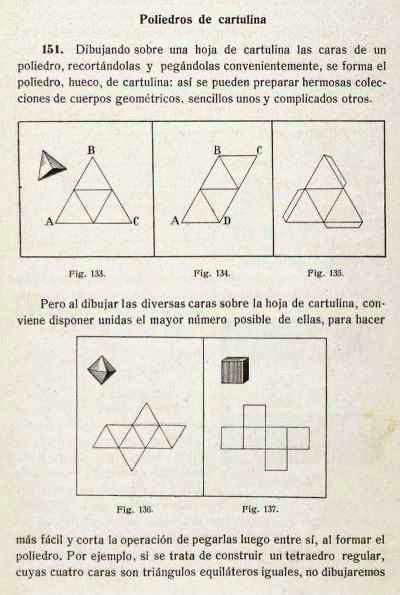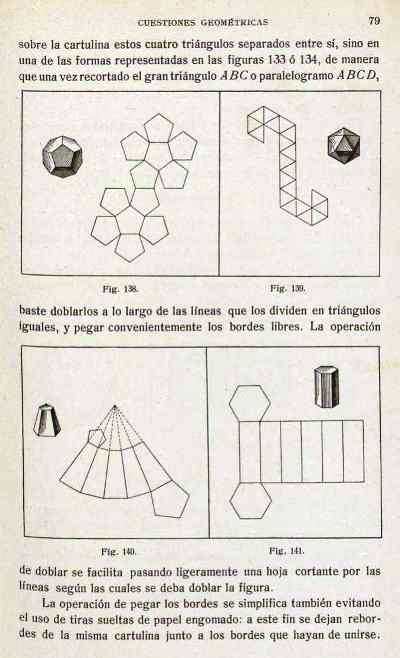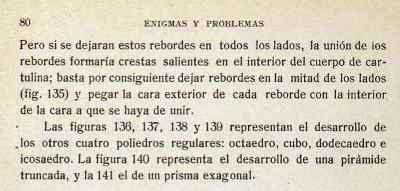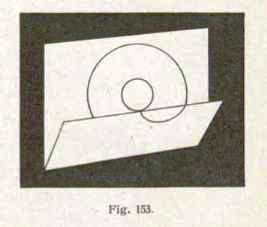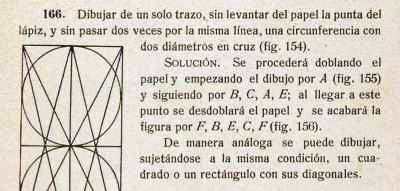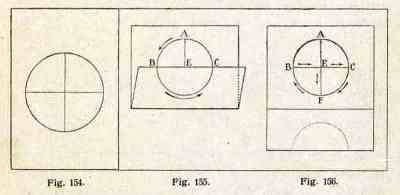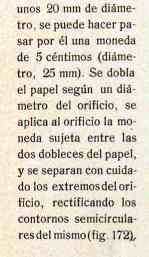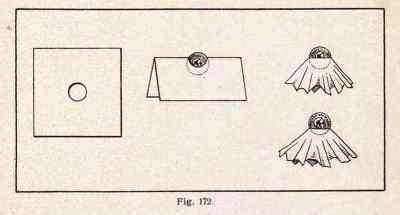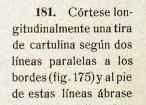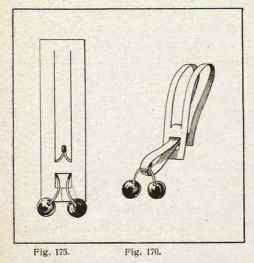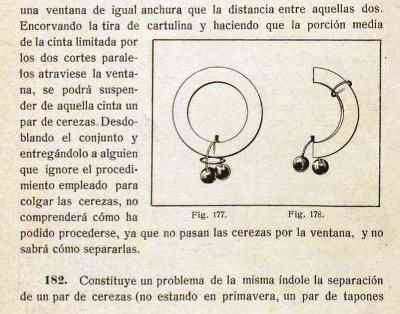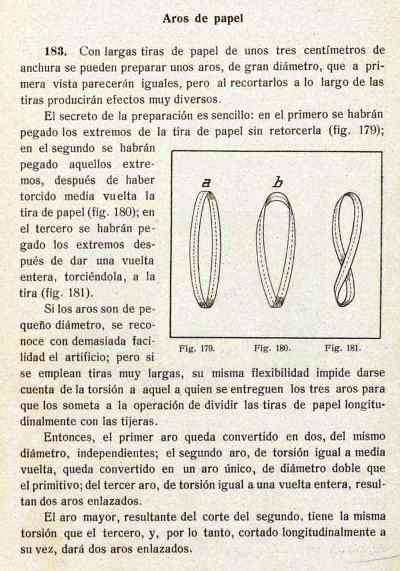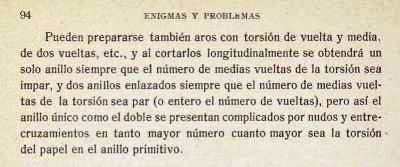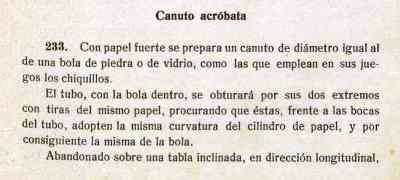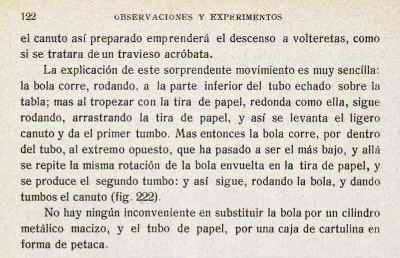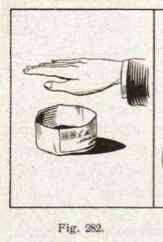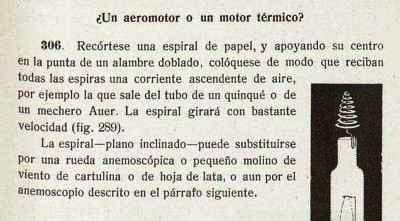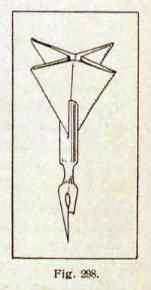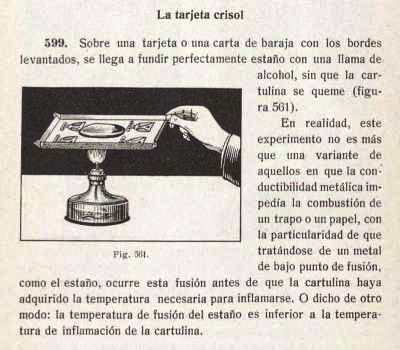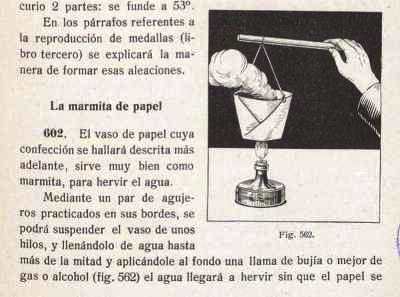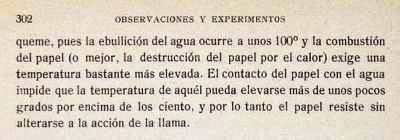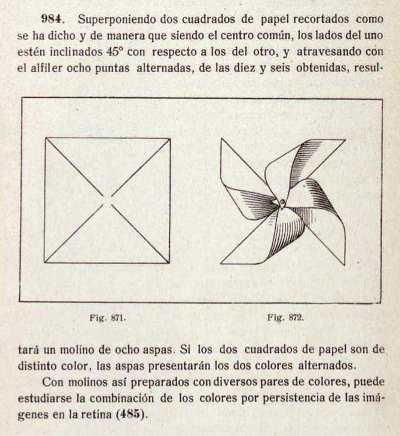| The Public Paperfolding History Project
Last updated 1/3/2024 x |
|||||||
| Ciencia Recreativa by Jose Estralella, 1918 | |||||||
| 'Ciencia
Recreativa' by Jose Estralella was published by Gustavo
Gili in Barcelona in 1918. It contains a chapter
specifically devoted to paperfolding and much other
incidental material of interest. The early editions of this work are undated. However, the Prologue to the 2nd Edition tells us that the 1st edition was published in 1918. It also tells us that a few new things have been added and many corrections, modifications and substitutions made to improve it.
This Prologue to the 2nd Edition is also included in the 3rd Edition, a full copy of which can be accessed online here. Another edition is available online here at the Biblioteca Digital Hispanica. (Information from Juan Gimeno) Although this edition is also undated it is clear that it is the 1st Edition because: 1. It does not include the Prologue to the 2nd Edition. 2. It lacks some of the material included in the 3rd Edition. 3. The Bibliography is shorter than that of the 3rd Edition. Since it is clearly earlier than the 3rd Edition, and cannot be the 2nd, because it lacks the Prologue, it can only be the 1st. The Analysis that follows is based on the paperfolding material included in this edition (which, in any case, appears identical to that in the 3rd Edition).
********* Analysis The work includes: From the Chapter on Paperfolding From a square ... The initial paragrah reads, roughly, 'By folding it, according to art, curious figures are obtained, which more or less conventionally recall the shape of various objects. These constructions, which had once been considered as futile entertainment for children, have been rehabilitated by modern Pedagogy and consequently admitted with all honours to schools: They give rise in fact to extremely useful exercises in manual work ...' The first few pages first set out a method of diagramming folding sequences:
********** The next few sections explain Simple Folds of Life based on diagonal and side to side folding: Librito - Booklet
********** Panuelo - Handkerchief
********** Manteleta - Blanket
********** Yelmo - Helmet
********** Yelmo pequeno - Small Helmet
********** The third section explains, in stages, how to fold the blintz base and the double blintz basic form, treating each stage in the process as a Form of Life and giving it a name in accordance with Froebelian practice. Velero - Sailboat
********** The Double Blintz Basic Form is then developed into many other familiar forms, including a Cocotte / Pajarita made in an unusual way. Cometa - The Kite
********** Murciélago - Bat No illustration of the finished design is given.
********** La Pajarita - The Cocotte / Pajarita
********** Mesa - The Table No illustration provided
********** Molina de viento - The Windmill
********** Petaca (Flask) - The Cigar Case
********** Jarron - The Vase
********** Vapor (Presumably a reference to an Oil Lamp) - The Boat with Sail No illustration provided
********** Doble barca / Langosta - The Double Boat The text says, roughly, 'Some call this figure a lobster because standing on JK-LM it jumps if it is hit on B o D' (ie if standing normally it will jump if both points at one end are struck simultaneously). No illustration provided but the letters refer to Fig 786.
********** Caja (Box) - Simple Fold of Life (Note that the sides of this box are just lifted up and no effort is made to secure them.)
********** (The next two designs are basic folds treated as Forms of Life and given names in accordance with Froebelian practice, rather than finished designs in their own right.) Armario (Wardrobe) - Simple Fold of Life
********** Ventana (Window) - Simple Fold of Life
********** Taza - The Cup and Saucer
********** Casa con jardin (House with Garden) -
********** Barco grande - The Paper Boat (made from a square)
********** Barco pequeno - another more secure form of the Paper Boat (also made from a square) No illustration provided.
********** Sofa - The Bench with Arms Developed from the Casa con jardin. Note that the arms are floating rather than attached to the base.
********** Artesa - The Trough An illustration of the finished figure is not provided.
********** Cometa Secilla - The Flyable Kite
********** Flecha - The Paper Dart
********** Monedero (Purse)
********** Cajon con tapas - The Junk Box
********** Espejo - The Mirror
********** La Gondola - The Chinese Junk
********** Fuelle - The Bellows
********** Pelota - The Waterbomb
********** Ciguena voladora - The Flapping Bird
********** La Rana - The Inflatable Frog There is no mention that this frog can either be inflated or will jump.
********** Cajita larga - The Patisserie Box
********** El vaso - The Paper Cup
********** From rectangles ...
********** Pistola - The Single-Barrelled Paper Banger
********** Pistola con dos canones - The Double-Barrelled Paper Banger
********** The Fold and One Cut Latin Cross (Section 960 explains how to create a cross with equal arms by beginning with a square.)
********* The Fold and One Cut Pentagram
********** Paper Filters
********** From the Other Chapters Summing the Angles of a Triangle
********** How to Construct an Equilateral Triangle and a Regular Hexagon
********** Polyhedral Nets
********** Pattern Drawing Puzzles Solved by Folding Paper (how to draw impossible patterns with a single line and without lifting the pen from the paper) Concentric Circles
*** Quartered Circle, Square etc
********** Big Coin Through Small Hole Magic Trick
********** How to Climb Through a Playing Card
********** The Cherries Puzzle (and a variation similar to the Card Puzzle)
********** The Afghan Bands
********** The Jumping Bean
********** The Exploding Paper Ring
********** The Spiral Snake
********** Paper Flights
********** How to Melt Tin in a Playing Card
********** How to Boil Water in a Paper Pan
********** The Cut and Fold Windmill
********** |
|||||||
